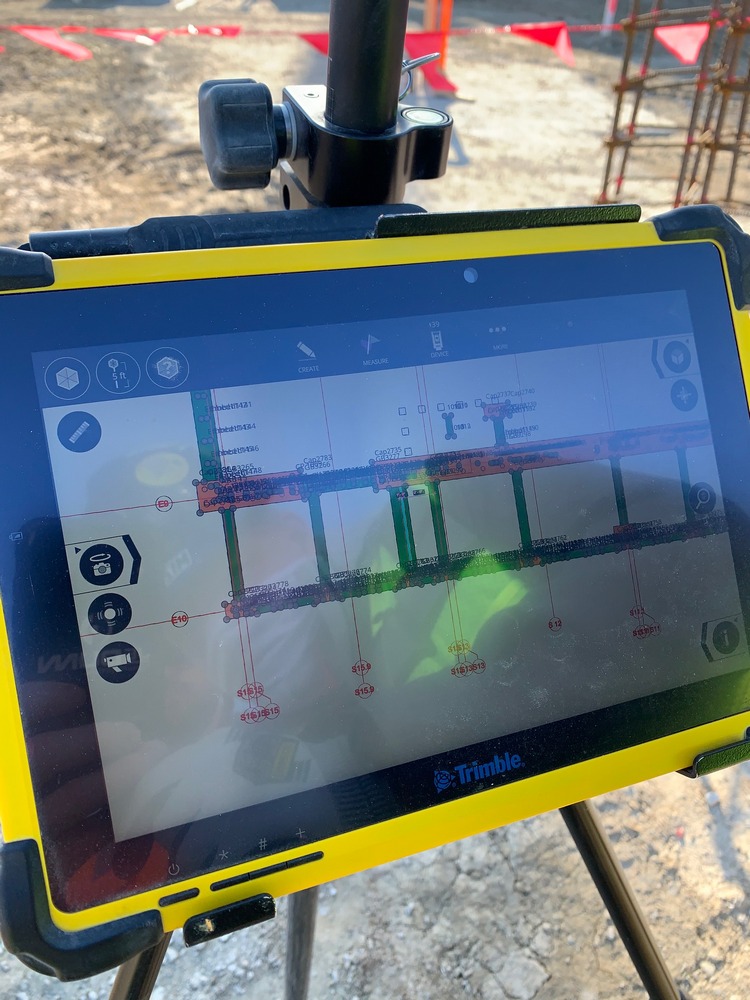
The importance of field collaboration to project success
By Dylan Lowder
Recent changes in the AEC industry – like technological advances, more complex facilities, increased collaboration, earlier involvement of contractors and trade partners and more offsite prefabrication – are having a ripple effect throughout the design and construction world. One of the more notable ramifications is the role and value of virtual design and construction (VDC), which is evolving to meet these new needs and opportunities both in the field and in the office. The integration of VDC in all phases and among all partners is key to ensuring a successful project delivered on schedule and budget.
Evolution of VDC in the field
One of the most notable changes is the timing, continuity and duration of VDC team involvement, particularly onsite. “VDC has become more integrated with project teams onsite. The days of VDC being in a silo in the office are over, which is why in the field, we work hand in hand with other team members in the office,” said Trade Foreman Casey Layman. “We’re using VDC in the job trailer and problem solving in real time with our operational leads. This has allowed us to support projects from the design phase all the way through construction.”
The primary use of VDC in the past 10 years has been for clash detection to eliminate surprises in the field, but integrating with team members, as well as trade partners, is changing the timing of all parties’ involvement as well. “Collaboration used to begin when we start looking at drawings,” said Senior Superintendent Robert Pinkerton.” Now, it’s evolved beyond just looking at MEP. It’s total project coordination, and moving VDC resources to jobsites is part of that. It helps eliminate the need for rework by putting buildings in position for the trades behind us, while also enhancing quality and profit.”
VDC helps in controlling the process from start to finish, adding a level of accuracy and confidence that the work being put in place is correct. Through the BIM-enabled layout process, VDC produces a fully coordinated set of shop drawings. This single-source document of record is a one-stop shop for our field teams putting the work in place. This one document drastically increases productivity and the quality of the work being performed.
Expanded role and new expectations
Buildings are becoming increasingly more complex, but schedules and durations aren’t changing — making the use of VDC and early contractor involvement critical to overall project success. “Our design partners are under pressure to get drawings out the door as quickly as possible, so early engagement with a GC that can vet issues with BIM is imperative,” said Pinkerton. “We’re seeing more and more projects that use VDC as a resource to help trade partners’ clashes, not just the GCs. Because of the accuracy of VDC and the skilled people using it, some project teams are starting to rely on VDC to vet issues, such as skin defects and other clashes, and find any gaps. The earlier the VDC team is on board to vet these potential problems, the bigger the role it plays in all phases.”

The advantages to our partners are that early engagement and collaboration with VDC and our design/trade partners allows us to find issues early, giving our design partners the opportunities to prioritize issues to keep the project on track and on schedule. “Trades did not collaborate as part of the team the way they do now, and the shift to having all parties at the table earlier means we can troubleshoot any potential issues with the design before the documents are finalized. Many projects are now making time for earlier VDC scanning and collaboration, which speaks to the impact it has to all involved,” said Pinkerton.
Changing from a reactive to a proactive approach allows project teams to identify issues and find solutions early, benefiting the owners along with the project team. Getting the information into the hands of the tradesmen and women putting the work in place allows them to work more efficiently — and more informed— which results in a higher quality product at the end of construction.
A more powerful future
As the technology evolves and becomes more robust, teams are starting to look for new ways to leverage VDC for a more detailed look at the spacing and overall layout of buildings. Experts in the field are now able to drill down much further than in the past to examine clashes for details such as door openings and pocketing spaces, meaning VDC has the potential to solve problems of all scales.
Technology in the office adds to full collaboration, training and integrating field staff into the process. This allows us to spread standardized consistent workflows and resources across the country, streamlining the process and gaining efficiencies in staffing as well — another problem construction teams are consistently challenged with solving. The expanding role of VDC only becomes more powerful when we operate as one integrated team for clients and project partners to lean on in all phases and helps ensure a successful project no matter the scope or scale.
Dylan Lowder is VDC manager at JE Dunn Construction.


 Join our thriving community of 70,000+ superintendents and trade professionals on LinkedIn!
Join our thriving community of 70,000+ superintendents and trade professionals on LinkedIn! Search our job board for your next opportunity, or post an opening within your company.
Search our job board for your next opportunity, or post an opening within your company. Subscribe to our monthly
Construction Superintendent eNewsletter and stay current.
Subscribe to our monthly
Construction Superintendent eNewsletter and stay current.